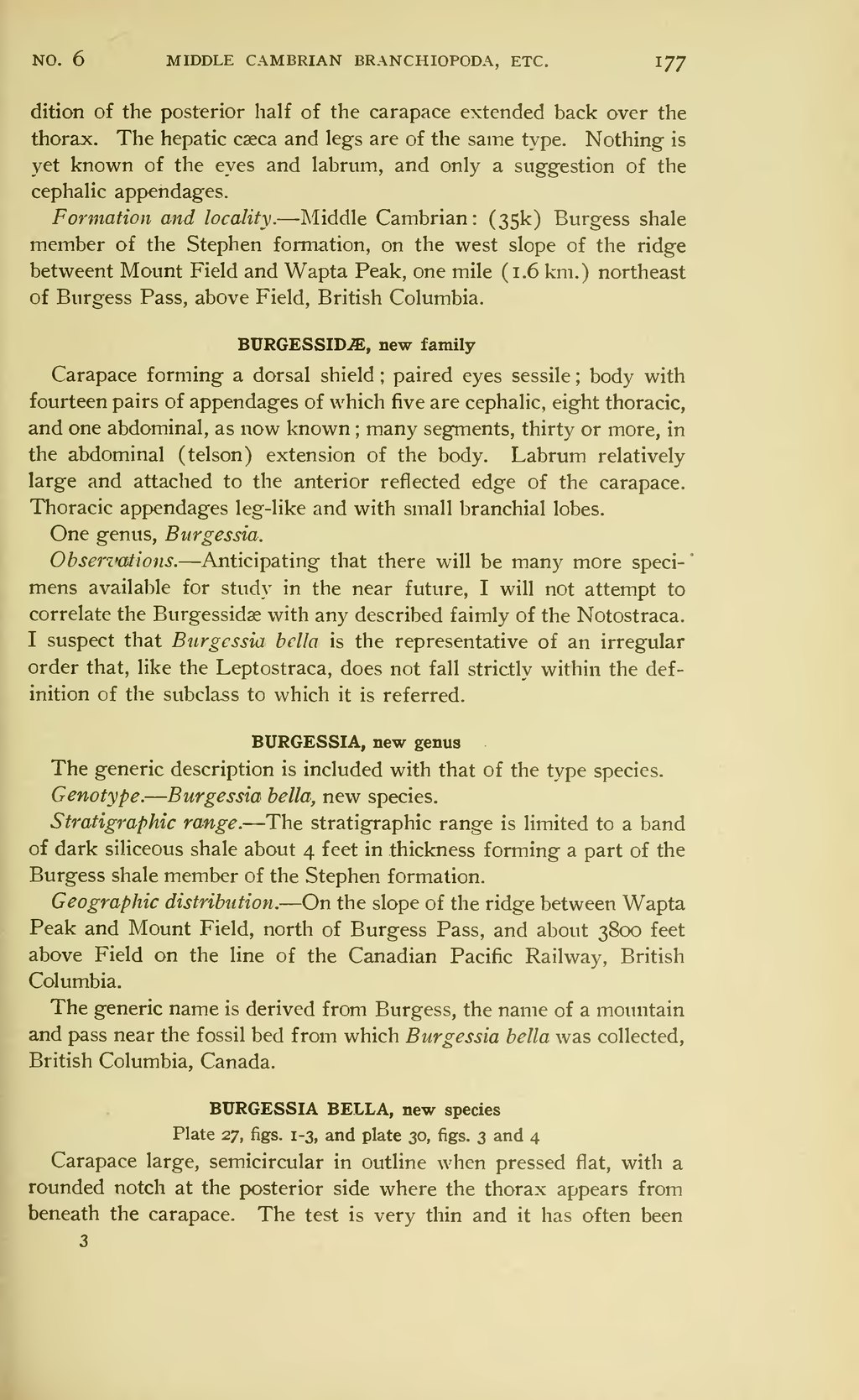dition of the posterior half of the carapace extended back over the thorax. The hepatic cæca and legs are of the same type. Nothing is yet known of the eyes and labrum, and only a suggestion of the cephalic appendages.
Formation and locality.—Middle Cambrian: (35k) Burgess shale member of the Stephen formation, on the west slope of the ridge betweent Mount Field and Wapta Peak, one mile (1.6 km.) northeast of Burgess Pass, above Field, British Columbia.
BURGESSIDÆ, new family
Carapace forming a dorsal shield; paired eyes sessile; body with fourteen pairs of appendages of which five are cephalic, eight thoracic, and one abdominal, as now known; many segments, thirty or more, in the abdominal (telson) extension of the body. Labrum relatively large and attached to the anterior reflected edge of the carapace. Thoracic appendages leg-like and with small branchial lobes.
One genus, Burgessia.
Observations.—Anticipating that there will be many more specimens available for study in the near future, I will not attempt to correlate the Burgessidæ with any described faimly of the Notostraca. I suspect that Burgessia bella is the representative of an irregular order that, like the Leptostraca, does not fall strictly within the definition of the subclass to which it is referred.
BURGESSIA, new genus
The generic description is included with that of the type species.
Genotype.—Burgessia bella, new species.
Stratigraphic range.—The stratigraphic range is limited to a band of dark siliceous shale about 4 feet in thickness forming a part of the Burgess shale member of the Stephen formation.
Geographic distribution.—On the slope of the ridge between Wapta Peak and Mount Field, north of Burgess Pass, and about 3800 feet above Field on the line of the Canadian Pacific Railway, British Columbia.
The generic name is derived from Burgess, the name of a mountain and pass near the fossil bed from which Burgessia bella was collected, British Columbia, Canada.
BURGESSIA BELLA, new species
Plate 27, figs. 1–3, and plate 30, figs. 3 and 4
Carapace large, semicircular in outline when pressed flat, with a rounded notch at the posterior side where the thorax appears from beneath the carapace. The test is very thin and it has often been
